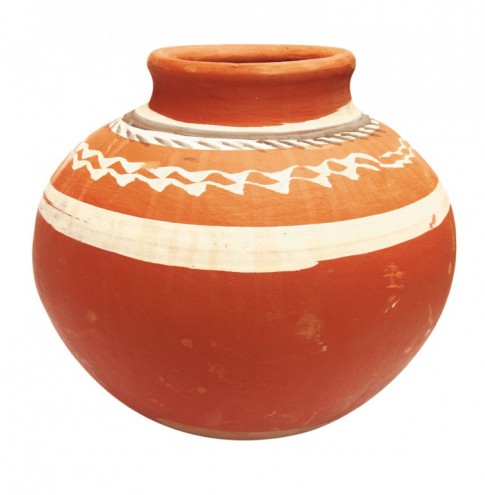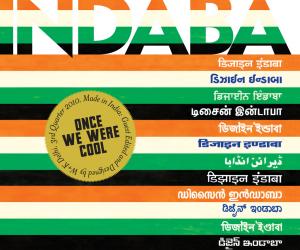First Published in
Over the last two decades of globalisation, I have witnessed the best of eco-friendly ideas and practices of India being marginalised and destroyed, and replaced by the toxic and plastic culture imported from the West as “progress.”
Forests have always been central to Indian civilization. They have been worshipped as Aranyani, the Goddess of the Forest, the primary source of life and fertility. The diversity, harmony and self-sustaining nature of forests formed the organisational principles guiding Indian civilization. The aranya sanskriti (roughly translated as “the culture of the forest” or “forest culture”) was not a condition of primitiveness but one of conscious choice.
India, today, is a zone of contest between a sustainable culture based on the living energies of biodiversity and sacredness of species and a non-sustainable and inequitable culture based on fossil fuels.
The symbol of the culture of biodiversity and of a living economy is the
sacred cow that gives energy as draught power and fuel. She gives organic manure. She gives food in the form of milk, ghee, butter, buttermilk and yoghurt. And she provides pest control in the form of cow urine and panchagavya – an organic mixture made from the waste material of the cow, which also serves as fertiliser. Today, cows are being banned to make way for the car.
The ficus tree is another sacred species of a traditional economy of biodiversity. Along roads, ficus trees were planted to provide shade. If a road had to be widened, it would go around the ficus trees. Today, millions of sacred ficus trees planted over hundreds of years are being cut down to make highways.
Cows and trees used to be inviolable in India. Humans had to adjust their activities to protect sacred species. The livelihoods of the poor were inviolable under Article 21 of the Constitution, that guarantees the right to life. Today the car has become inviolable. Culture and the Constitution can be violated to protect the car. Humans and other species have to adjust and be sacrificed to make way for the car. Globalisation literally comes riding on a car to India. And cars need highways and flyovers, they need fossil fuels. They need aluminium and steel and petrochemicals. Cars redesign the countryside and the city.
The pattal is another aspect of eco-friendly India. Patta is leaf and pattal is the leaf plate that is still used in rural India. After a pattal is used, it is eaten by cows. This process is part of a zero-waste culture. However, today polystyrene plates and cups are spreading like a cancer, destroying the ozone layer and contributing to mountains of solid waste.
The kullar – the earthen cup – was our disposable and recyclable alternative to the polystyrene cup and was once widespread.
My childhood memories take me back to the wonderful flavour of water kept in our surais and gharas – the earthen water pots that cooled water without electricity or refrigeration. Today, the surais and gharas have been replaced with the plastic water bottles sold by soft drink giants. The ghara symbolises the pot of life. The ghara outside people’s homes is part of a culture of giving – in cities even today, some homes, especially in summer, place gharas outside for the thirsty passerby. But the plastic water bottle is part of a culture of taking. A plastic water bottle pollutes during bottling, and pollutes with plastic when the bottle is thrown away.
The neem tree is another symbol of India’s eco-friendly culture. Neem trees provide natural toothbrushes, and are also an alternative to toxic pesticides.
The gas leak in Bhopal that killed thousands in December 1984 was from the Union Carbide pesticide plant, which manufactured Carabaryl, a pesticide used largely in growing cotton. In 1984 I woke up to the fact that agriculture had become like war. Pesticides were war chemicals, deployed to agriculture when the
war ended.
I also realised that we do not need toxic pesticides that kill humans and other species that maintain the web of life. Pesticides do not control pests. Instead, they create them by killing beneficial species. We have safer, non-violent alternatives such as neem. Which is why at the time of the Bhopal disaster I started a campaign, “No more Bhopals, plant a neem.”
Bija – the seed – is the aspect of India’s perennial culture most under threat. When we sow a seed we pray, “May this seed be exhaustless.” The genetic engineering industry is producing terminator seeds. Their prayer seems to be, “May this seed be terminated, so our profits are exhaustless.”
Bt cotton (a genetically engineered variety of cotton) was introduced to end pesticide use. But Bt cotton has failed to control the Bollworm and has instead created new pests, leading to an increase in pesticide use. The high costs of genetically modified seeds and pesticides are pushing farmers into debt. Farmers in debt are committing suicide. If one adds the 200 000 farmer suicides in
India to the 25 000 killed in Bhopal,
we are witnessing a massive corporate genocide. Lies are told about how without pesticides and GMOs there will be no food. In fact, the conclusions of IAASTD (International Assessment of Agricultural Science and Technology for Development) undertaken by the UN, show that
organic agriculture produces more and better food at a lower cost than either chemical agriculture or GMOs.
Genetic engineering and patents on seed are attacking the very foundations of Indian civilization, which is based on the respect for all species. We grew up with the concept of Vasudhaiva Kutumbakam, or the Earth Family. I continue to practice this philosophy through the movement Navdanya where we are dedicated to saving biodiversity and seeds and promoting non-violent – or ahimsic – organic farming.
Esteemed scientist and environmentalist, Dr Vandana Shiva has been directing and supporting environmental activism since the 1970s. Through Navdanya, her current focus is the rejuvenation of indigenous knowledge and culture, supporting local farmers and creating awareness about food rights in the face of globalisation.










